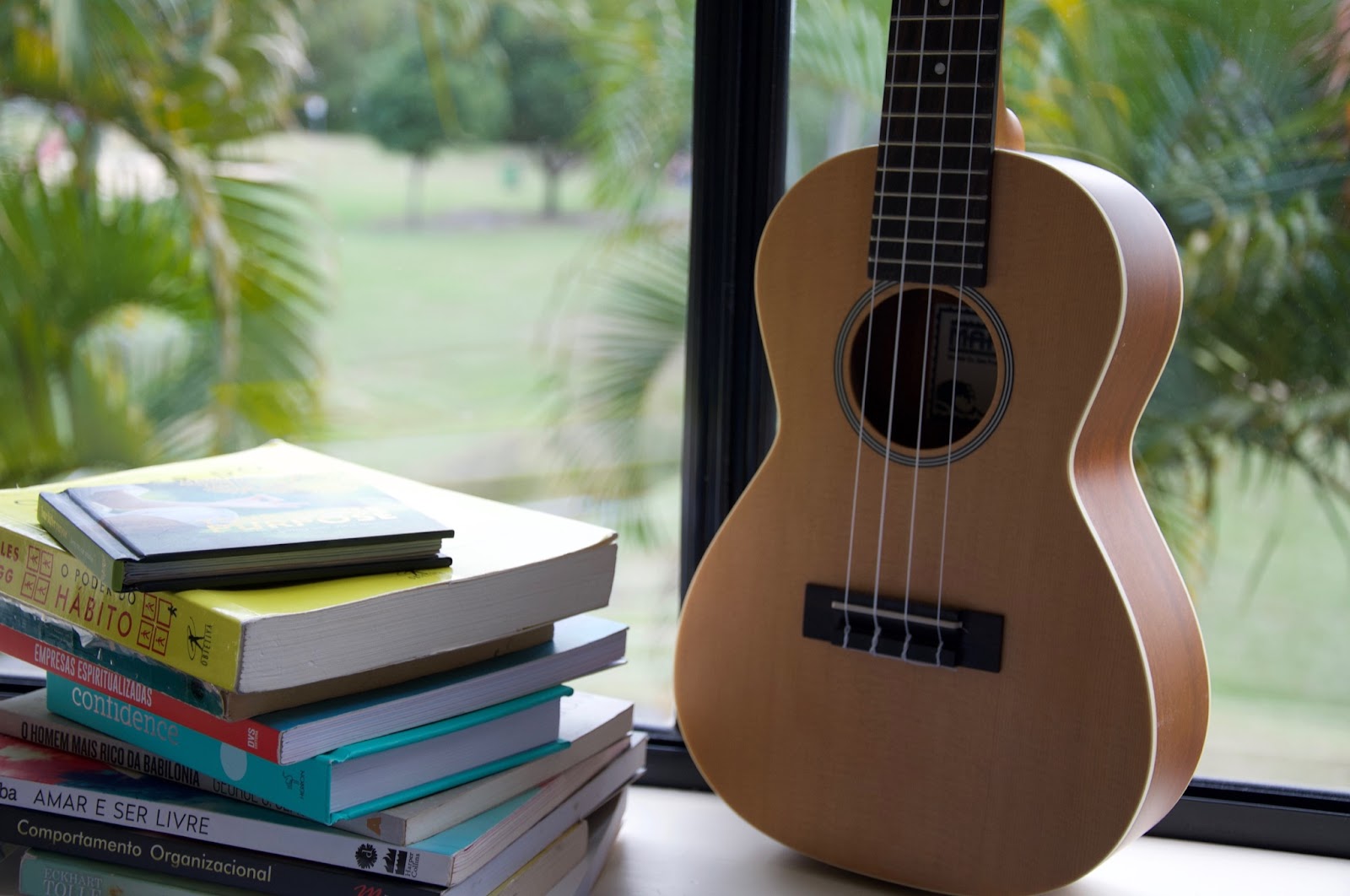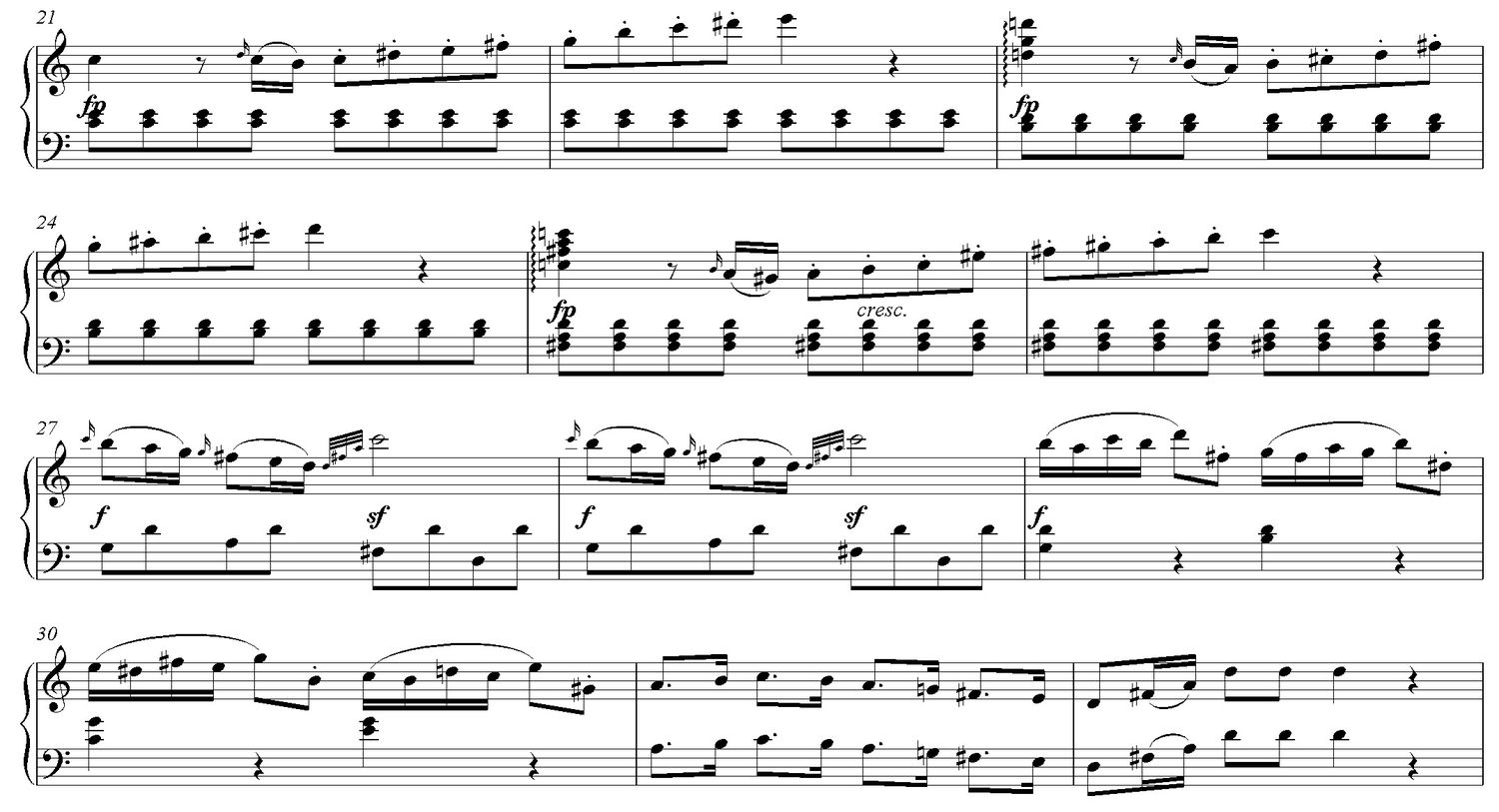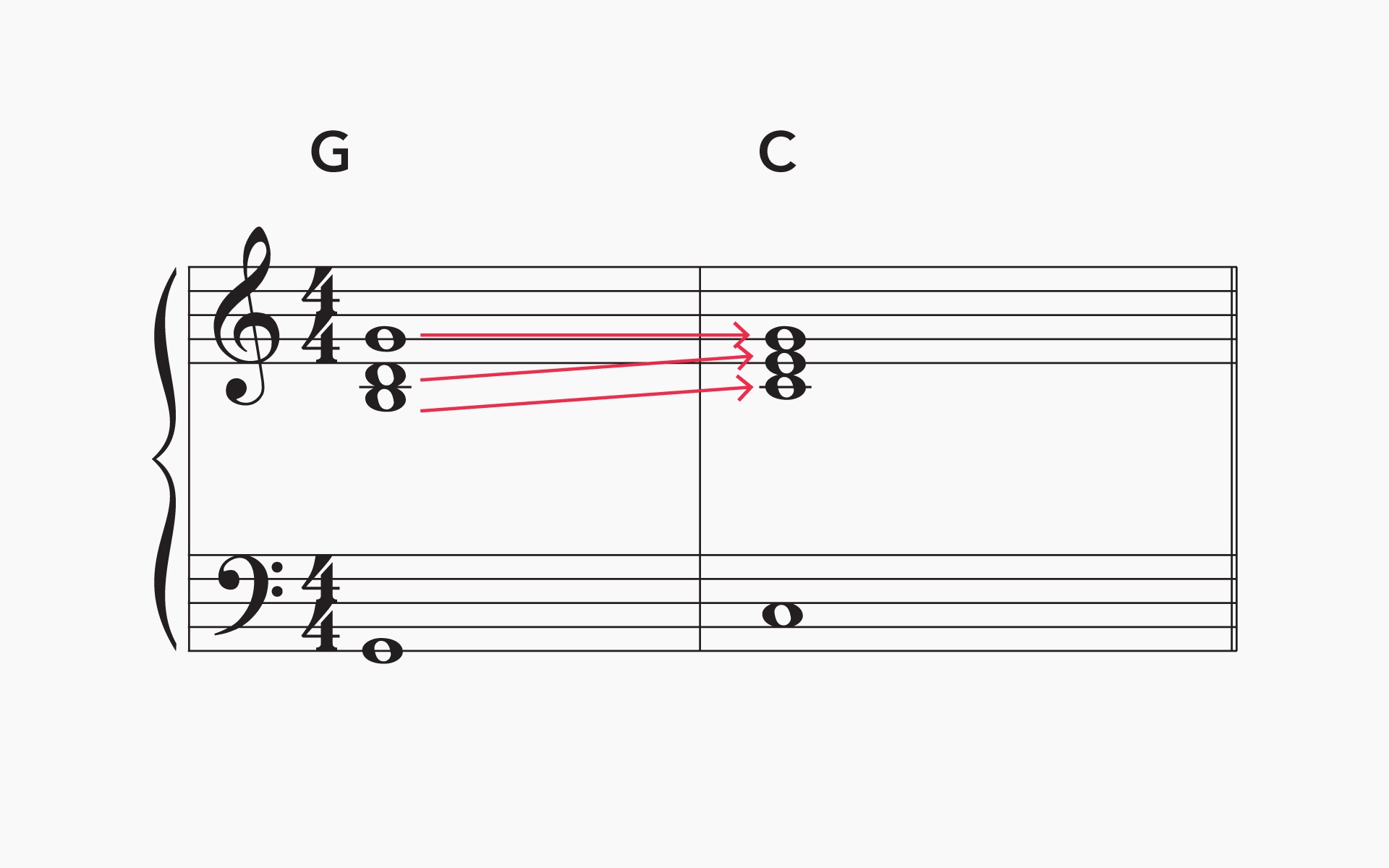Home>Production & Technology>Music Theory>How To Self Study Music Theory


Music Theory
How To Self Study Music Theory
Published: February 1, 2024
Learn music theory at your own pace with our comprehensive guide. Master the fundamentals and unlock your musical potential. Start self-studying music theory today!
(Many of the links in this article redirect to a specific reviewed product. Your purchase of these products through affiliate links helps to generate commission for AudioLover.com, at no extra cost. Learn more)
Table of Contents
- Introduction
- Benefits of Self-Studying Music Theory
- Setting Goals for Self-Studying Music Theory
- Creating a Study Plan
- Essential Resources for Self-Studying Music Theory
- Understanding Basic Music Theory Concepts
- Applying Music Theory to Instruments
- Practicing Ear Training Techniques
- Analysis of Music Theory in Songwriting
- Tips and Strategies for Effective Self-Studying
- Common Challenges and How to Overcome Them
- Conclusion
Introduction
Welcome to the world of music theory! If you have a passion for music and a desire to understand its inner workings, self-studying music theory can be an incredibly rewarding journey. Music theory is the foundation that helps musicians grasp the principles behind the creation, structure, and interpretation of music.
Whether you are an aspiring musician, a songwriter, or simply someone who wants to deepen their appreciation for music, self-studying music theory can provide you with a solid understanding of how music works. By studying music theory on your own, you have the freedom to learn at your own pace and focus on the aspects that interest you the most.
This article will guide you through the process of self-studying music theory, offering valuable insights and practical tips to help you on your journey. From setting goals and creating a study plan to exploring essential resources and applying music theory to instruments, we will cover everything you need to know to embark on a successful self-study adventure.
By self-studying music theory, you gain the opportunity to delve into the rich tapestry of musical principles and concepts. From understanding notation and scales to analyzing harmony and chord progressions, the knowledge gained through music theory enhances your overall musical understanding.
Benefits of Self-Studying Music Theory
Embarking on a journey of self-studying music theory can bring a myriad of benefits to your musical growth and understanding. Here are some of the key advantages:
- Enhanced musical comprehension: Studying music theory expands your knowledge and understanding of how music is constructed. You’ll gain insights into the principles of melody, harmony, rhythm, and form, allowing you to analyze and appreciate music in a more profound way.
- Improved musicianship: By learning music theory, you’ll become a more skilled and versatile musician. You’ll have a better grasp of music notation, which will enable you to read and interpret sheet music more effectively. Additionally, understanding music theory empowers you to make informed musical choices, whether you’re improvising, composing, or arranging.
- Greater creativity: Music theory serves as a creative toolbox for musicians. It provides you with a wide range of techniques, concepts, and ideas that you can apply to your musical creations. By understanding how different elements of music interact, you’ll have more tools at your disposal to experiment and explore new musical territories.
- Effective communication with other musicians: Music theory is the common language that musicians use to communicate musical ideas. By studying music theory, you’ll be able to understand and articulate musical concepts more effectively when collaborating with other musicians. This shared understanding enhances the overall musical experience and facilitates seamless collaboration.
- Increased musical confidence: One of the most significant benefits of self-studying music theory is the boost in confidence it brings. As you gain knowledge and understanding, you’ll feel more confident in your musical abilities. This confidence will extend to various musical situations, such as rehearsals, performances, and musical discussions.
Overall, self-studying music theory provides you with a solid foundation to explore and appreciate music in a more meaningful way. It not only deepens your musical understanding but also enhances your creativity, communication skills, and self-assurance as a musician. Embrace the benefits of studying music theory and open up new horizons in your musical journey.
Setting Goals for Self-Studying Music Theory
When embarking on a journey of self-studying music theory, setting clear goals is essential to keep your learning organized and focused. By establishing goals, you can track your progress, stay motivated, and ensure that you are moving in the right direction. Here are some tips to help you set effective goals for your music theory studies:
- Define your purpose: Start by understanding why you want to study music theory. Is it to enhance your skills on a particular instrument? Is it to compose your own music? Identifying your purpose will help you set relevant and meaningful goals.
- Set specific and measurable goals: Make your goals as specific as possible. For example, instead of setting a vague goal like “I want to learn music theory,” be more specific, such as “I want to understand the concept of major and minor scales” or “I want to be able to analyze chord progressions in popular songs.” This will make it easier to measure your progress and determine when you have achieved your goals.
- Break down your goals: Music theory can be a vast subject, so breaking down your goals into smaller, manageable tasks is crucial. Divide your goals into smaller milestones and set deadlines for each one. This will help you stay on track and prevent overwhelm.
- Set realistic expectations: Be realistic about what you can achieve within a given timeframe. Music theory requires time and effort, so set goals that are attainable based on your available time and commitment. Setting unrealistic goals can lead to frustration and demotivation.
- Consider both short-term and long-term goals: It’s important to have a balance between short-term and long-term goals. Short-term goals help you stay motivated and see progress quickly, while long-term goals give you a sense of direction and purpose in your overall musical journey.
- Track your progress: Keep a record of your progress as you achieve your goals. This can be in the form of a journal, a checklist, or a music theory app. Being able to see your progress visually will boost your motivation and show you how far you’ve come.
Remember, goals can evolve as you progress in your music theory studies. It’s okay to adjust and refine your goals as you gain more understanding and discover new areas of interest. By setting clear and meaningful goals, you’ll be able to structure your self-study efforts effectively and make steady progress in your music theory journey.
Creating a Study Plan
Having a well-structured study plan is essential for making consistent progress in your self-study of music theory. A study plan helps you organize your learning materials, allocate time for studying, and ensure that you cover all the necessary topics. Here are some steps to create an effective study plan:
- Assess your current knowledge: Start by evaluating your current level of music theory knowledge. This will help you identify your strengths and weaknesses, allowing you to tailor your study plan accordingly.
- Identify the core topics: Music theory covers a broad range of concepts, from notation and scales to harmony and form. Identify the key topics that you want to focus on in your study plan. This could include learning about intervals, chords, rhythm, or analyzing musical structures.
- Break down the topics: Once you’ve identified the core topics, break them down into smaller subtopics or chapters. This will help you create a more detailed and organized study plan. For example, if you have chosen intervals as a core topic, you could break it down into subtopics like basic intervals, compound intervals, and interval inversions.
- Set a timeline: Determine how much time you can dedicate to studying music theory each day or week. Based on this, estimate how long it will take to cover each subtopic or chapter. Be realistic with your timeline to avoid overwhelming yourself.
- Allocate study sessions: Decide how frequently and for how long you will study music theory. It’s generally more effective to have shorter study sessions spread out over several days rather than cramming all your study time into one day. Consistency is key.
- Select study materials: Choose reliable and comprehensive study materials that align with your learning style. This could include textbooks, online courses, video tutorials, practice exercises, or even music theory apps. Make sure to gather resources that cover the topics in your study plan.
- Create a study schedule: Take all the information you’ve gathered and create a study schedule outlining what topics you will study, when you will study them, and what resources you will use. Having a visual schedule helps you stay organized and ensures that you cover all the necessary material.
- Track your progress: As you follow your study plan, track your progress by checking off completed topics or marking milestones. Celebrating these milestones will keep you motivated and show you how far you’ve come.
Remember, flexibility is key in a study plan. Be open to making adjustments as needed, especially if you find certain topics more challenging or if you discover new areas of interest along the way. With a well-designed study plan, you’ll have a roadmap to guide your self-study efforts and maximize your progress in music theory.
Essential Resources for Self-Studying Music Theory
As you embark on your self-study journey of music theory, having access to reliable and comprehensive resources is crucial. These resources will provide you with the necessary information, examples, exercises, and practice materials to deepen your understanding of music theory. Here are some essential resources to consider:
- Music Theory Books: There are numerous music theory books available that cover a wide range of topics. Look for books that are well-regarded and recommended by musicians and instructors. Some popular options include “The Complete Idiot’s Guide to Music Theory” by Michael Miller and “Tonal Harmony” by Stefan Kostka and Dorothy Payne.
- Online Courses: Online platforms, such as Coursera, Udemy, and Skillshare, offer a variety of music theory courses taught by experienced instructors. These courses provide structured lessons, assignments, and quizzes to guide your learning. Check for user reviews and ratings to ensure the course meets your needs.
- Video Tutorials: Video tutorials on platforms like YouTube can be a valuable resource for visual learners. Look for channels with knowledgeable instructors who explain music theory topics clearly and provide practical examples. Some popular music theory channels include “Rick Beato” and “Adam Neely.”
- Music Theory Apps: There are several mobile apps available that offer interactive lessons, quizzes, and ear training exercises. These apps can be a convenient way to study music theory on-the-go. Some popular music theory apps include “Complete Music Reading Trainer” and “Tenuto.”
- Practice Exercises: Practice exercises are essential for applying the concepts you learn in music theory. Look for books or websites that provide exercises on topics like intervals, scales, chord progressions, and sight-reading. Building a strong foundation through regular practice is key to mastering music theory.
- Ear Training Resources: Developing your ear is a crucial aspect of music theory. Look for resources that offer ear training exercises and examples to help you recognize intervals, chords, and melodies by ear. Some ear training apps like “EarMaster” and websites like “Musictheory.net” can assist in developing your listening skills.
- Online Forums and Communities: Engaging with other musicians and music theory enthusiasts can greatly enhance your learning experience. Join online forums and communities, such as Reddit’s “r/musictheory” or music theory Facebook groups, where you can ask questions, participate in discussions, and learn from others.
- Sheet Music and Musical Analysis: Studying sheet music and analyzing musical compositions can deepen your understanding of music theory in practical contexts. Look for sheet music collections, classical scores, or popular songs with detailed analysis to practice applying music theory concepts.
Remember, the key is to find resources that resonate with your learning style and preferences. Experiment with different resources to see what works best for you. Utilizing a combination of books, online courses, videos, apps, and interactive practice materials will provide you with a well-rounded education in music theory as you continue your self-study journey.
Understanding Basic Music Theory Concepts
When self-studying music theory, it is crucial to establish a solid understanding of the fundamental concepts that form the building blocks of music. Here are some key concepts to focus on:
- Notes and Pitch: Start by familiarizing yourself with the musical alphabet, which consists of the notes A, B, C, D, E, F, and G. Understand the concept of pitch and how it is represented on the musical staff, with higher pitches represented by higher positions on the staff.
- Scales and Modes: Study the different types of scales, such as major and minor scales, and explore modes like Ionian, Dorian, and Mixolydian. Understand the patterns of whole steps (W) and half steps (H) that make up these scales and modes.
- Intervals: Intervals are the distances between two pitches. Learn about the different types of intervals and their names, such as major, minor, perfect, augmented, and diminished intervals.
- Chords: Dive into the world of chords, which are made up of multiple notes played simultaneously. Learn about basic triads, such as major, minor, augmented, diminished chords, and extended chords like seventh chords.
- Key Signatures: Understand the concept of key signatures, which indicate the sharps or flats used in a particular key. Learn how to identify key signatures and their relationship with scales and chords.
- Rhythm and Time Signatures: Explore rhythm and time signatures, which determine the organization of beats in music. Learn about different note values, rests, and how to read and interpret time signatures.
- Harmony and Progressions: Study the principles of harmony and chord progressions. Gain an understanding of how chords function within a key, how they move from one to another, and how to analyze common chord progressions.
- Form and Structure: Explore musical form and structure, such as the binary form, ternary form, and the sonata form. Learn how to identify different sections within a piece of music and understand how they contribute to the overall structure.
As you study these basic music theory concepts, it’s important to reinforce your understanding by practicing with exercises and examples. Apply your knowledge to analyze simple melodies, chord progressions, and even transcribe music by ear. This hands-on approach will help solidify your understanding and make the concepts more tangible.
Remember, building a strong foundation in basic music theory concepts is essential as it forms the framework for more advanced topics. Take your time to grasp these concepts fully and seek clarification or additional resources when needed. With a solid understanding of these foundational concepts, you’ll be equipped to dive deeper into the world of music theory and expand your musical horizons.
Applying Music Theory to Instruments
Understanding and applying music theory to your instrument is a crucial step in your musical journey. By connecting theory with practical application, you will be able to transform your theoretical knowledge into actual music. Here are some tips and considerations for applying music theory to your instrument:
- Learn the instrument’s layout: Familiarize yourself with the layout and specific characteristics of your instrument. Understand how the notes are produced, how to navigate the fretboard, keyboard, or other relevant features. This knowledge will provide a solid foundation for applying music theory concepts.
- Translate theory to the instrument: Take the concepts you have learned in music theory, such as scales, chords, and intervals, and practice them on your instrument. For example, practice playing major and minor scales on the piano, or play different chord inversions on the guitar.
- Experiment with different musical styles and genres: Apply music theory to different musical styles and genres that interest you. Explore how different scales, chords, and progressions are used in jazz, rock, classical, or any other style that you enjoy. This will broaden your understanding and versatility on your instrument.
- Improvise and create your own music: Use your knowledge of music theory to experiment with improvisation and composition. Instead of relying solely on playing existing pieces, try creating your own melodies, chord progressions, or even full compositions. This will further deepen your understanding of music theory and allow you to express your own musical ideas.
- Analyze and transcribe music: As you become more comfortable with music theory, try analyzing and transcribing pieces of music. Choose songs or compositions that you enjoy and dissect the chord progressions, melody lines, and other musical elements. This analytical process will help you develop a deeper appreciation for the music you play.
- Collaborate with other musicians: Apply your music theory knowledge through collaboration with other musicians. Join or form a band, ensemble, or jam group where you can apply your theory skills together. This will provide opportunities to experience how theory interacts with other instruments and musicians, and it will challenge you to apply your knowledge in a practical and collaborative context.
- Continuously practice and refine: Applying music theory to your instrument is an ongoing journey. Regularly practice and refine your skills, integrating new theory concepts as you progress. The more you apply theory to your instrument, the more intuition and fluency you will develop, enabling you to express yourself more freely and creatively.
Remember, applying music theory to your instrument is a balance between theory and practicality. Embrace the process of experimentation, exploration, and continual learning. By integrating theory into your instrumental practice, you will enhance your musicality and unlock new possibilities on your instrument.
Practicing Ear Training Techniques
Ear training is a vital aspect of musical development and a skill that can greatly benefit any musician. By honing your ear, you’ll be able to recognize and identify musical elements such as intervals, chords, melodies, and rhythms by simply listening. Here are some ear training techniques to incorporate into your practice routine:
- Interval Recognition: Begin by training yourself to distinguish different intervals, which are the distances between two notes. Start with easy intervals like major seconds or perfect fifths, and gradually work your way up to more challenging ones. Use online resources, apps, or practice with a musical partner who can play intervals for you to identify.
- Chord Recognition: Practice recognizing different types of chords, such as major, minor, dominant, and diminished chords. Develop your ability to hear the quality and characteristics of each chord, and eventually progress to identifying more complex chords and chord progressions.
- Melodic Dictation: Train yourself to transcribe melodies by listening and notating them. Start with simple melodies and gradually move on to more intricate compositions. Focus on capturing the pitch, rhythm, and phrasing of the melodies accurately. You can also practice melodic dictation with the help of ear training exercises available on apps or online platforms.
- Rhythmic Dictation: Improve your rhythmic sense by practicing rhythmic dictation. Listen to rhythms and try to accurately notate them on paper or with rhythm notation software. Start with simple rhythms and gradually progress to more complex patterns, including syncopation and polyrhythms.
- Solfege and Sight Singing: Incorporate solfege (such as the movable do or fixed do system) into your ear training practice. This technique involves assigning syllables to each note of a scale and using them to sing melodies or transcribe music by ear. Sight singing exercises and singing along with sheet music can also help strengthen your ear and improve your sense of pitch.
- Transcribing Music: Regularly challenge yourself to transcribe songs or musical passages by ear. Start with simpler songs and gradually work your way up to more complex pieces. Transcribing helps you develop your ear, train your musical memory, and deepen your understanding of musical structures and techniques.
- Active Listening: Actively listen to a wide range of music from various genres and styles. Pay attention to the different musical elements, such as the instrumentation, harmony, rhythm, and dynamics. Train your ear to pick out specific details within the music and analyze how they contribute to the overall composition.
- Practicing with Instruments: Use your instrument to practice ear training exercises. Play intervals, chords, or short melodies and try to identify them by ear. This hands-on approach connects theory with practice and helps develop a strong ear-hand coordination.
Consistency is key when it comes to ear training. Incorporate regular ear training sessions into your practice routine, dedicating specific time to focus on improving your listening skills. Over time, with perseverance and practice, you’ll notice a significant improvement in your ability to understand and interpret music by ear.
Analysis of Music Theory in Songwriting
Songwriting is a creative process that can be greatly enhanced by an understanding of music theory. By analyzing the music theory concepts used in popular and influential songs, you can gain insights into effective songwriting techniques and expand your own creative abilities. Here are some ways in which music theory analysis can benefit your songwriting:
- Chord Progressions: Analyzing the chord progressions in songs can provide inspiration and ideas for your own compositions. Look for common progressions, such as the I-IV-V progression or chord substitutions that create unique moods. Experiment with different progressions to evoke specific emotions or stylistic characteristics in your own songs.
- Melodic Structures: Study the melodic structures of songs to understand how melodies are built and how they interact with the underlying chords. Analyze the use of repetition, variation, phrasing, and contour to create memorable melodies. Apply these techniques to craft engaging and melodic hooks in your own songwriting.
- Lyric Structure and Rhyme Patterns: Explore the lyrical structure and rhyme patterns used in songs. Analyze how lyrics are structured in verses, choruses, bridges, and pre-choruses. Observe how rhymes are crafted, and how they contribute to the overall flow and storytelling of the song. This analysis can help you develop effective and impactful lyrical compositions.
- Harmonic Function and Modulations: Understanding the harmonic function of different chords and how they relate to each other can greatly enhance your songwriting. Analyze songs with key modulations or unexpected harmonic progressions to see how they create tension and resolution. Experiment with modulations and unique chord choices to add depth and interest to your own compositions.
- Instrumentation and Arrangement: Pay attention to the instrumentation and arrangement choices in songs. Notice how different instruments interact, how dynamics are used, and how sections are arranged to create dynamics and a sense of progression. Apply these techniques to your own arrangements to enhance the emotional impact and overall sonic experience of your songs.
- Genre-specific Techniques: Analyzing songs within your chosen genre can provide valuable insights into genre-specific music theory concepts and songwriting techniques. Whether it’s analyzing the chord voicings in jazz standards or the use of syncopation in funk music, understanding genre-specific theory can help you create authentic and compelling songs within that style.
- Song Structure and Form: Examine the song structure and form in popular songs across different genres. Identify the verse-chorus-bridge structure or variations like AABA or ABAB. Understanding how song sections are organized and transition can help you create cohesive and well-structured compositions.
By analyzing the music theory concepts used in various songs, you can gain insight into the choices made by successful songwriters. Experiment with applying these concepts to your own songs, adapting them to your unique style and creative vision. Remember to strike a balance between applying theory and allowing your creativity to flow naturally. Ultimately, the goal is to use music theory analysis as a tool to enhance your songwriting and tap into new levels of creativity and expression.
Tips and Strategies for Effective Self-Studying
Self-studying music theory requires discipline, focus, and effective strategies to make the most of your learning experience. Here are some tips and strategies to help you succeed in your self-study journey:
- Set a Study Schedule: Establish a regular study schedule that suits your availability and learning style. Dedicate specific time slots for studying music theory and stick to them consistently. This will create a habit and ensure that you consistently make progress.
- Break It Down: Music theory can be vast and complex, so break down the topics into smaller, manageable chunks. Focus on mastering one concept at a time before moving on to the next. This approach allows for a more focused and thorough understanding of each topic.
- Practice Regularly: Consistent practice is essential for reinforcing music theory concepts. Set aside time each day to review previous material and complete exercises or examples to apply what you have learned. Regular practice ensures that the information stays fresh in your mind and becomes second nature.
- Engage in Active Learning: Actively engage with the material while studying. Take notes, ask questions, and quiz yourself to reinforce your understanding. Rather than passively reading or watching videos, actively participate in the learning process to deepen your comprehension.
- Utilize Multiple Learning Resources: Explore different resources, such as books, online courses, videos, and interactive exercises. Each resource offers a unique perspective or teaching style, allowing you to grasp concepts from various angles. Experiment with different resources to find what works best for you.
- Find a Study Group or Partner: Connect with other like-minded individuals who are also studying music theory. Join forums, online communities, or local study groups to discuss concepts, ask questions, and share insights. Collaborating with others can provide fresh perspectives and a support system to keep you motivated.
- Teach or Explain Concepts to Others: One of the most effective ways to solidify your understanding of music theory is to teach or explain concepts to others. Share what you have learned with someone else, such as a friend, family member, or even an imaginary student. This forces you to organize your thoughts and reinforces your own understanding.
- Apply Theory to Real Music: Take the concepts you learn in music theory and apply them to real music. Analyze songs, transcribe melodies, and try playing different chords and progressions on your instrument. Applying theory to practical examples brings concepts to life and helps you understand how they are used in real-world musical contexts.
- Review and Reflect: Regularly review and reflect on your progress. Go back to previous topics and review them periodically to reinforce your understanding. Reflect on how far you’ve come and celebrate your achievements. This boosts motivation and reminds you of the progress you have made.
- Stay Curious and Have Fun: Approach your music theory self-study with a curious and playful mindset. Be open to exploring different concepts, trying new techniques, and experimenting with your instrument. Enjoy the process of learning and discovering new aspects of music theory.
Remember that self-study is a personal journey, so adjust these tips and strategies to fit your unique learning style and goals. Stay consistent, remain patient, and embrace the joy of learning as you delve deeper into the fascinating world of music theory.
Common Challenges and How to Overcome Them
Self-studying music theory can sometimes come with its fair share of challenges. However, with the right mindset and approach, you can overcome these challenges and make progress in your learning journey. Here are some common challenges and strategies to overcome them:
- Lack of Structure: Without a formal curriculum or teacher, it can be challenging to create and maintain a structured learning path. To overcome this, create a study plan with clear goals and objectives. Break down the topics into manageable chunks and establish a routine that includes dedicated study time. Utilize online resources and books that provide a structured approach to learning music theory.
- Difficulty Staying Motivated: Maintaining motivation can be tough when studying on your own. To stay motivated, set smaller achievable goals along the way, and celebrate your progress. Join online communities or find a study group where you can share your achievements and challenges with fellow learners. Exploring different musical genres and styles can also reignite your passion by exposing you to a variety of inspiring sounds.
- Complexity and Overwhelm: Music theory can be intricate and overwhelming at times, especially when dealing with advanced concepts. Start with the basics and gradually build your knowledge. Break down complex ideas into smaller, more digestible parts. Seek clarification by utilizing online forums, asking questions, or finding a mentor who can guide you through challenging concepts.
- Keeping Theory Relevant to Instrument: Sometimes, it may be difficult to see the direct application of music theory to your instrument. To overcome this challenge, actively connect theory to your instrument by regularly practicing scales, chords, and progressions. Analyze and transcribe music that features your instrument prominently to deepen your understanding of how theory relates to your specific playing style.
- Time Management: Balancing self-study with other commitments can be demanding. Prioritize your study time and establish a consistent schedule. Break your practice sessions into manageable durations that fit into your daily routine. Consider utilizing smaller pockets of time throughout the day for quick practice sessions or review periods. Remember, consistency is key in self-study, even if it means practicing in shorter, more frequent sessions.
- Isolation and Lack of Feedback: Self-study can sometimes feel isolating without the immediate feedback of a teacher or peers. Seek out opportunities for feedback by sharing your progress with friends, family, or online communities. Engage in virtual collaboration, where you can exchange ideas and receive feedback from other musicians. Utilize technology to record and listen back to your practice sessions, allowing you to self-assess and identify areas for improvement.
- Frustration with Mistakes: Making mistakes is a normal part of the learning process. Embrace them as opportunities for growth and learning. Instead of getting discouraged, view mistakes as valuable feedback on areas that need improvement. Break down challenging sections into smaller components and practice them slowly and accurately, gradually building up speed and fluency.
Remember, self-studying music theory requires perseverance and dedication. Embrace the challenges as opportunities for growth and learning. Stay patient, consistent, and open to seeking guidance when needed. With the right mindset and strategies, you can overcome these challenges and continue progressing in your music theory journey.
Conclusion
Congratulations on embarking on your self-study journey of music theory! By taking the initiative to deepen your understanding of the principles and concepts behind music, you have opened up a whole new world of musical growth and creativity. Throughout this article, we have explored the benefits of self-studying music theory, discussed essential resources, and provided tips and strategies for effective learning.
Remember that self-studying music theory is a personal and unique process. Set clear goals, create a study plan, and stay motivated by consistently practicing and applying what you learn. Embrace the challenges along the way and seek support from online communities or fellow musicians. By actively engaging with the material, applying theory to your instrument, and analyzing music, you can integrate music theory into your musical expression and songwriting.
Keep in mind that music theory is a tool that can enhance your creativity, improve your musicianship, and deepen your appreciation for music. It is a language that helps us understand the inner workings of music and allows us to communicate and connect with other musicians. Enjoy the process of self-studying music theory, stay curious, and explore the vast world of musical possibilities that unfold before you.
As you continue your music theory journey, remember that it is not just about memorizing facts and concepts, but also about applying and integrating your knowledge into your musical practice. Engage actively with the material, experiment with new ideas, and allow your creativity to flourish. Music theory is not a rigid set of rules, but rather a framework that empowers you to express yourself as a musician.
So, pick up your instrument, grab your study materials, and immerse yourself in the wonders of music theory. Let this knowledge be your guide as you continue to explore, create, and grow as a musician. Embrace the joy of self-discovery, and may your musical journey be filled with harmonious melodies and endless inspiration.











